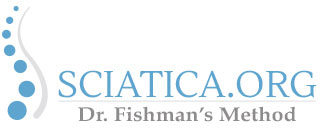Regenerative Medicine
New techniques mobilize and enhance the body’s own capacities for repair and regeneration. The principle behind the injections described here is to concentrate the cells that secrete growth factors, and thereby concentrate the growth factors and other proteins and peptides which promote these functions. Studies document that cells that normally sustain cartilage and keep it healthy may be affected by the growth factors and become cells that actually make new cartilage and even new bone.
Injecting platelets (platelet-rich plasma, or PRP) has been strikingly successful at our office. Knee injections, our most common site, have been 80% successful over the past year, frequently with patients whose knee joints have failed surgery.
Injections are basically of two types:
Joints: Here the injection is done directly into the joint, a procedure that is similar to injecting Euflexxa or Synvisc, except for one thing: the outcomes are significantly better, and endure significantly longer.
PRP injections are commonly done to repair cartilage in arthritis, but we have seen MRI-verified cases in which medial meniscus tears and anterior cruciate ligament tears have been healed through PRP injections.
Ligaments and tendons:
PRP expedites the formation of new connective tissue and collagen, appearing able to stimulate repair of the damaged or torn ligament or tendon without affecting the healthy tissue – just as platelets do when they form a covering of an open wound. Injection is frequently made with the guidance of musculoskeletal ultrasound, and often MRI is done beforehand to survey the general area and determine the depth and orientation of the injury.
How are joint injections made?
Patients give 60 cc of blood, more than is usually drawn for blood tests, but less than w hen one donates blood. After being drawn up in a clot-resistant syringe, the blood is placed in a centrifuge that separates out the platelets from the other elements and cells in the blood. Generally 2-3 cc of platelets are transferred into a separate syringe automatically.
After careful cleansing of the skin, and using a cooling technique that eliminates or largely diminishes any pain, the 2-3 cc of platelets are injected into the joint.
Patients are encouraged to reduce strain in the injected joint for 5-6 weeks following the injection.
Newer Developments
We have begun using amniotic fluid and stem cell preparations for joints. No blood needs to be drawn, so the entire procedure takes very little time, and fine morcelization of the cells allows use of a smaller gauge needle. Laboratory and clinical reports of the healing properties of amniotic fluid used in this way are extremely positive. In our hands, joint and tendon injections with PRP, platelet rich plasma are approximately 80% successful, and we will publish statistical reports on these newer procedures when we have adequate data from our patients.
